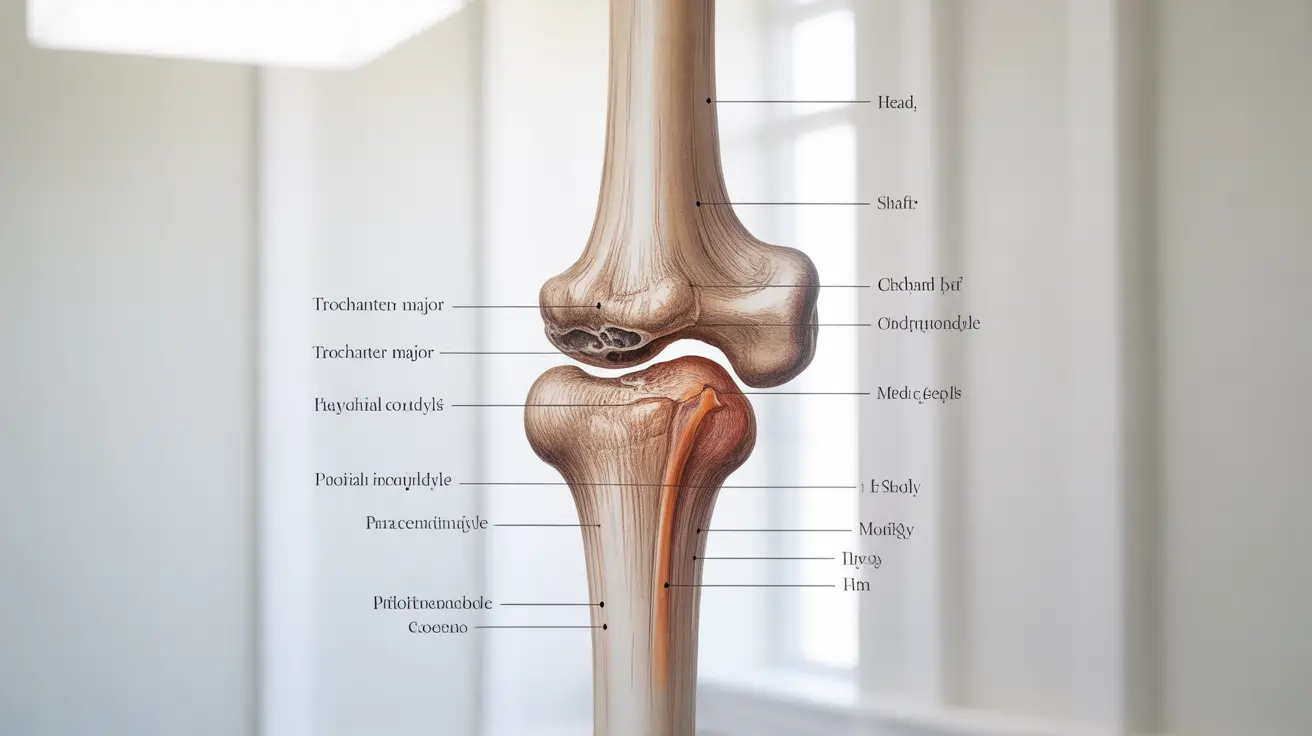The femur, commonly known as the thighbone, is the largest and most robust bone in the human body. This remarkable skeletal component plays a crucial role in mobility, stability, and overall body structure. Understanding its functions, potential issues, and proper care is essential for maintaining optimal skeletal health.
As a vital component of the musculoskeletal system, the femur connects the hip to the knee and supports our entire body weight during standing, walking, and running. Its unique structure and strength make it essential for daily activities, yet it can be susceptible to various conditions and injuries that require medical attention.
Anatomy and Function of the Femur
The femur consists of several distinct parts, each serving specific purposes. The rounded head fits into the acetabulum of the pelvis, forming the hip joint. The long shaft provides attachment points for powerful muscles, while the lower end forms part of the knee joint through its medial and lateral condyles.
This remarkable bone serves multiple crucial functions:
- Weight-bearing support during standing and movement
- Muscle attachment points for leg movement
- Protection of surrounding blood vessels and nerves
- Formation of essential joint structures at the hip and knee
Common Femur Injuries and Conditions
Femoral Fractures
Despite being the strongest bone in the body, the femur can break under severe trauma. Common causes include:
- High-impact vehicle accidents
- Falls from significant heights
- Sports-related injuries
- Weakened bone structure due to osteoporosis
Symptoms of femur fractures typically include severe pain, visible deformity, inability to bear weight, and swelling around the thigh area.
Hip Joint Complications
Femoroacetabular impingement (FAI) occurs when the femoral head doesn't fit perfectly into the hip socket. This condition can lead to cartilage damage and early onset osteoarthritis if left untreated. Treatment options range from conservative management to surgical intervention, depending on severity.
Growth and Development
The femur undergoes significant changes throughout life, from early childhood through adolescence. During growth, specialized areas called growth plates allow the bone to lengthen and strengthen. Proper nutrition, especially adequate calcium and vitamin D intake, is crucial for optimal femur development.
Alignment Variations
Two notable conditions affecting femoral alignment are coxa vara and coxa valga. Coxa vara occurs when the angle between the femoral neck and shaft is decreased, while coxa valga presents with an increased angle. Both conditions can impact hip function and may require medical intervention if severe.
Frequently Asked Questions
- What are the most common causes and symptoms of femur fractures?
Femur fractures typically result from high-energy trauma such as car accidents, falls from height, or severe sports injuries. Common symptoms include severe pain, visible deformity of the thigh, inability to move the leg, swelling, and bruising. Immediate medical attention is essential for proper treatment.
- How does femoroacetabular impingement affect the hip joint and how is it treated?
Femoroacetabular impingement (FAI) occurs when there's abnormal contact between the femoral head and hip socket, causing pain and restricted movement. Treatment options include physical therapy, activity modification, anti-inflammatory medications, and in severe cases, surgical correction.
- What role does the femur play in walking and weight-bearing?
The femur is crucial for walking and weight-bearing as it transfers force between the hip and knee joints, provides attachment points for walking muscles, and supports the entire body weight during movement. Its strength and structure are essential for maintaining proper gait and balance.
- How does the growth and development of the femur occur from childhood to adulthood?
The femur develops through a process called endochondral ossification, with growth plates at both ends allowing for lengthening during childhood and adolescence. Growth typically continues until skeletal maturity is reached, usually in the late teens or early twenties.
- What are the differences between coxa vara and coxa valga related to femur alignment?
Coxa vara involves a decreased angle between the femoral neck and shaft (less than 120 degrees), while coxa valga presents with an increased angle (greater than 135 degrees). These conditions can affect hip mechanics and may lead to complications if severe enough to require treatment.




